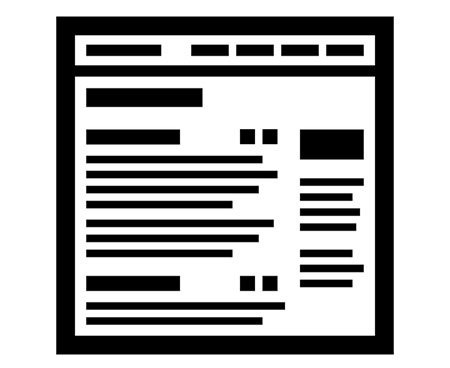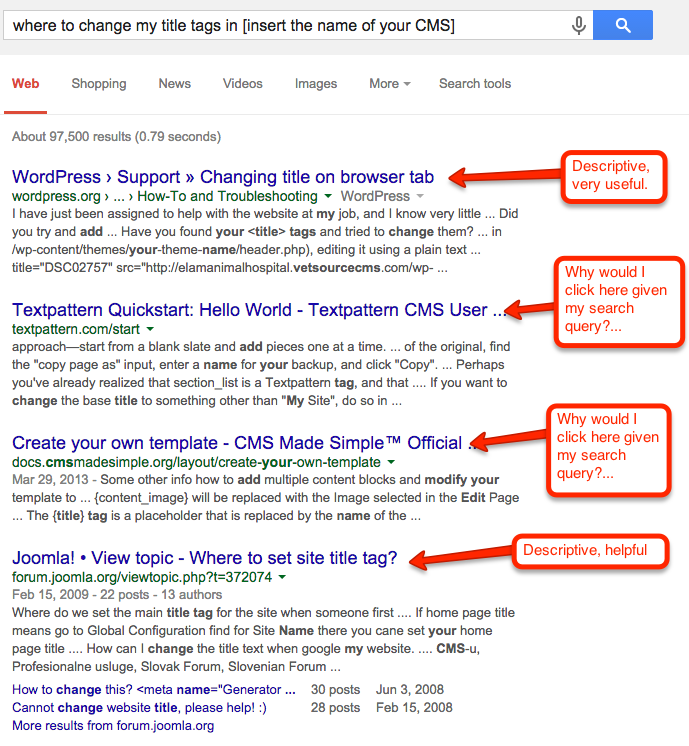
Optimizing your site means delivering your content to both people and search engine crawlers in a clear and straightforward manner.
You stand little to no chance of generating desirable results from search engine traffic if your website is not designed and developed in manner that displays the information you have in a fast and intuitive manner and there’s a lot that goes into making information useful let alone delivered quickly, intuitively, and in a way that is most easily read by search engine algorithms. But have no fear! We have outlined the basics below, as well as provided some links and details for more technical and advanced considerations.
The Basics of On-site Optimization
Page Speed
Page speed is a major concern for website owners. With increasing numbers of people using smartphones, reducing the time that it takes your site to load is only going to become more important to your performance in the search results. We recommend that you aim to have your site load time under 10 seconds at 1.5 mbps. URI Valet is a great tool to use for finding out how fast your site is right now.
How to improve your site speed
The bulk of the time it takes to load a webpage is spent with the images. If you have not compressed your images for the web, you should. Minimize the fanciness. Every feature that you put onto your website, a slider, or any moving graphics adds to the time needed to load the page. For every second it takes for your website to load, expect a further decrease in revenue generated.
Clear Descriptive Title
The meta-title tag of each of your pages may be one of the most important aspects of your on-page SEO. Your title tag is what will show up in the search results once the page is indexed, and will be a major factor in whether someone clicks on your result or not:

A descriptive and useful title tag also helps clearly indicate to search algorithms what you perceive the main topic of the page to be. Spend some time clarifying your title tags. It will be well worth it.
Optimal Title tag length is less than 55 Characters
Where does one change their Title Tags?
WordPress SEO is a wordpress plugin that we suggest using if you are on that CMS. If you use a different CMS, we suggest switching ;-). In all seriousness, if you need to find where to edit your title tags, but you are using a different CMS than WordPress, click here and enter the name of your CMS.
Use Clear Headings
Skimming is rampant on the internet. Break up the text on your page with headings in a manner that helps to inform your readership. This takes time and attention to detail, but proper use of headings can be what sets you apart.
The H1
Optimal procedure for use of an H1 tag on each page boils down to this: do it, make sure it makes sense, do not stuff it full of keywords.
Content
Determining the purpose of your content stems back to the goals of your website. Most businesses are working towards increasing the number of people calling for their product or service offering. What is important to keep in mind is that each person a business is trying to reach is trying to solve a problem. If you can help them solve the problem on your website, you are going to set yourself apart from your competition. Copywriting is arguably the most essential element to helping your already established traffic turn into more business.
Usefulness Wins
If your content is not adding unique information to the internet, why are you putting up a website? If you are simply telling the world what you offer, that’s fine. You will have created what we call a ‘business card website’. We call websites this because they rarely offer any more information of use than what is on a business card. The difference is that a website can cost much more than a business card. You should know that there is a limit to what you are going to be able to accomplish in the search engines if throwing a business card on to the pile is all you have to offer.
Empathy for Your Website Visitors
Want to make your website better? Start with summoning some empathy for your website visitors. That means putting yourself in their shoes, and asking yourself questions like:
- What information best describes the solution to their problem?
- How can it be more intuitively displayed?
What to Avoid
Adding every bell and whistle to your site, can, at times, make your site look a little more snappy, but each element is going to add time to load your website.
More Technical and Advanced On-Site Optimization
Internal Linking Strategies
How usable your site is for people who are actually visiting must be paramount in your concerns, but there are also ways to help direct page authority to more strategic landing pages that you are hoping will rank for targeted keywords.
Robots.txt
Knowing whether your site can be crawled is important. You can check this by going to your own site and adding/robots.txt to the url. For example, type in www.example.com/robots.txt. This will bring up a screen that will display the restrictions that you have placed on the ‘robots’ crawling your site.
Ecommerce Facets and Filters
Everything you need to know about eCmmerce facets and filters can be found in this beautiful post by our very own Frank Scharnell.
htpps and SSL Certificates
Best CSS Practices
This information will always be up to help guide you through optimizing your site yourself, but if you find that taking the time to do these important things on your website is too much for you, call us.